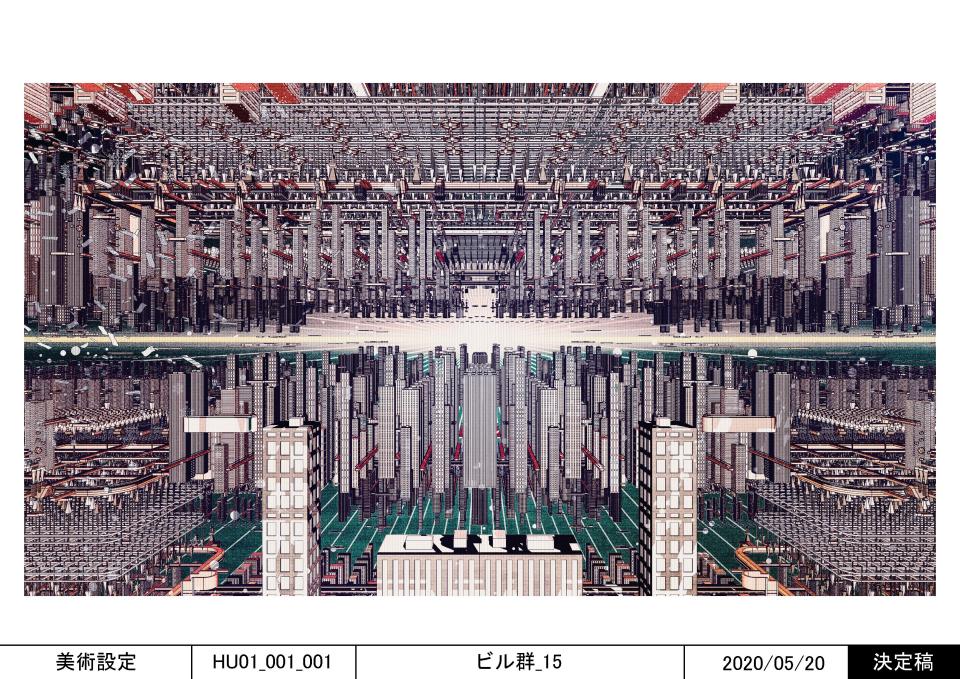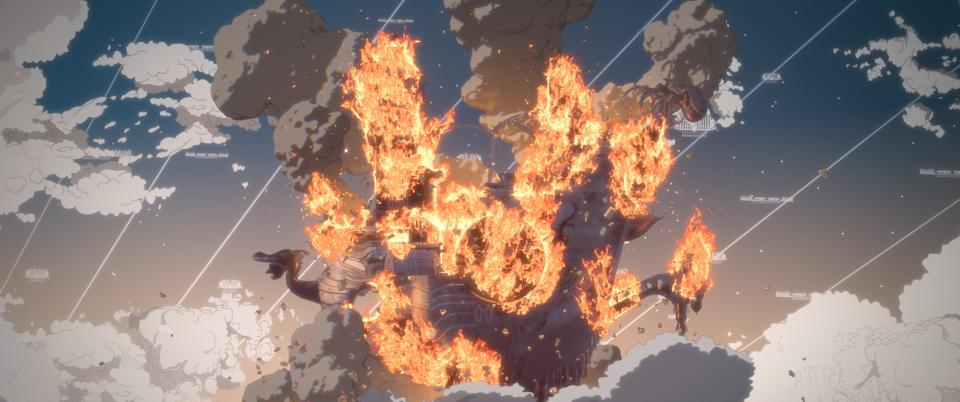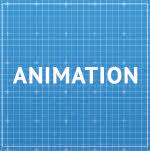Animating a ‘Beauty and the Beast’ Tale for the Internet Era in ‘Belle’

- Oops!Something went wrong.Please try again later.
- Oops!Something went wrong.Please try again later.
The internet was a mistake, at least if we’re to believe pop culture. From anime (“Perfect Blue”) to CG-laden live-action (“Ready Player One”) to streaming (“Black Mirror”), the internet has been portrayed as a horrifying dystopia in the 21st century, where our worst impulses are exacerbated. But not for Mamoru Hosoda. The Oscar-nominated director behind “Mirai” has spent the last 20 years showing us an internet that is full of beautiful possibilities for connecting with others, and his latest film, the Oscar hopeful “Belle” (from GKids and Studio Chizu) takes this to a different level of expression.
When we first enter the U, a virtual world with several billion users, it is a dazzling metropolis filled with skyscrapers that extends to the horizon. The story follows Suzu, a shy high schooler who assumes a new persona inside the U and becomes a global pop sensation named Belle, and then goes on a journey to save a mysterious beast from a mob of vigilantes. This is Hosoda fully realizing a vision that started all the way back with his directorial debut, the 2000 short “Digimon Adventure: Our War Game!” (later repackaged with another short and heavily re-edited in the U.S. to make “Digimon: The Movie”).
More from IndieWire
'Jihad Rehab': How 9/11 Turned Firefighter Meg Smaker Into a Sundance Filmmaker
Ricky Gervais Says He Would Host Oscars 'for Free' If He Could Write His Own Jokes
“Back then the internet was a big white space because I wanted to show that there was room for it to develop and expand,” Hosoda said, referring to how “Our War Game!” and his 2009 film “Summer Wars” make the online world an integral part of their plots. “Now, 20 years later, the internet has become much closer to the real world, so I wanted the U to be a space that is closer to reality, but still kind of mysterious and with all these skyscrapers at its center.”
To help bring his vision to life, Hosoda tapped London-based architect Eric Wong to design the world of U. As Wong tells it, the look of the giant city went through three iterations, the first one being a big U-shaped castle that was replaced by a giant array-like stadium like in Hosoda’s “Summer Wars,” before settling on the final, more ambitious city-like concept. “After a few iterations, [Hosoda] comes to me and asks to go back to the very first concept and combine everything we’ve learned so far and tells me I have four days,” Wong explained. “So the final version that you see in the film is this city comprised of a single line that changes scale to become something huge and modulated, representing the river that the main girl Suzu passes by near her home.”

GKids
The river imagery is key to the film’s portrayal of the internet. Wong’s linear design is meant to evoke the feeling of a place that goes on forever and is always growing and evolving even if we don’t see it, just as the story of “Belle” is but one out of countless others we don’t see. “With a river, you don’t see the source of the river and where it meets the sea at the same time,” Hosoda told IndieWire. “I wanted the audience to be thinking that the world of U was bigger than what we could show in the film, that there are different stories we don’t get to see this time.”
Part of what we don’t see, at least not a lot, are smaller floating islands that surround the world of U. These are meant to represent the remains of old internet services, such as Mixi and GeoCities in Japan, or Friendster and MySpace in the U.S. This reflects Hosoda’s idea of the internet as a place that changes and grows over time, with parts of it left out in favor of new services. It’s why the film mostly avoids namedropping real social media, even if we do see Twitter and Line being used in the background of many scenes, because it would instantly date the film.
What we do get see of the U feels like a sprawling metropolis that mixes styles and influences from all over the world, while still feeling otherworldly. Wong took inspiration from Manhattan, specifically Central Park, for the way U is filled with skyscrapers broken up by lots of parks so that the film looked more communal and less corporate and rigid.

GKids
“Most of my influences are real-world buildings, but because it’s a virtual world, and a lot of shapes are geometrically based, it gives it an abstract sort of global filter,” Wong explained. “It helped it become universal even if it is recognizable, rather than being tied down to something specific and narrow.”
The feeling of universality extended across the entirety of “Belle,” with Hosoda recruiting an international team not commonly seen in animation. Sure, plenty of animated films and shows outsource parts of production to foreign companies, but seldom is there such a collaboration between the different crews. In addition to Wong, Hosoda also tapped director Tomm Moore of Irish studio Cartoon Saloon (“Wolfwalkers”) to contribute background artwork, while Belle herself is designed by Korean animator Jin Kim, a Disney vet who designed Anna and Elsa from “Frozen.”

GKids
“As soon as I started looking outside of Japan for designers to work on U I realized just how many more possibilities open up,” Hosoda said. “I think many people in the animation industry put up very strong walls, so an American film will look, feel, and be made by Americans, and a Japanese film will look, feel, and be made by Japanese animators, or the same with a European film. But I think the pandemic helped bring down those barriers and helped us to work together beyond our own cultures to create something new, and I think audiences are expecting more globalized stories with globalized talent.”
It may be a bit too naively hopeful of Hosoda to focus on the good side of the internet rather than all the toxicity, the abuse, and violence it causes, but there is no denying that only Hosoda’s singular vision for the world could bring “Belle” to life. By combining the timelessness of Gabrielle-Suzanne de Villeneuve’s “Beauty and the Beast” with the timeliness of online interconnectivity, “Belle” uniquely smashes the feeling of loneliness and the fear of avatar exposure with visual beauty and spectacle. “It was the internet that allowed this director in Japan to find me, and the internet that allowed us to collaborate even as we went into lockdown for months, and it’s rather beautiful when you think about it,” Wong said.
Best of IndieWire
2021 Emmys Winners List: 'Ted Lasso,' 'The Crown,' and 'The Queen's Gambit' Lead the Night
2021 Emmy Predictions: Who Will Win at the Primetime Emmy Awards?
Emmy Predictions: Best Limited Series — Was It 'The Queen's Gambit' All Along?
Sign up for Indiewire's Newsletter. For the latest news, follow us on Facebook, Twitter, and Instagram.


